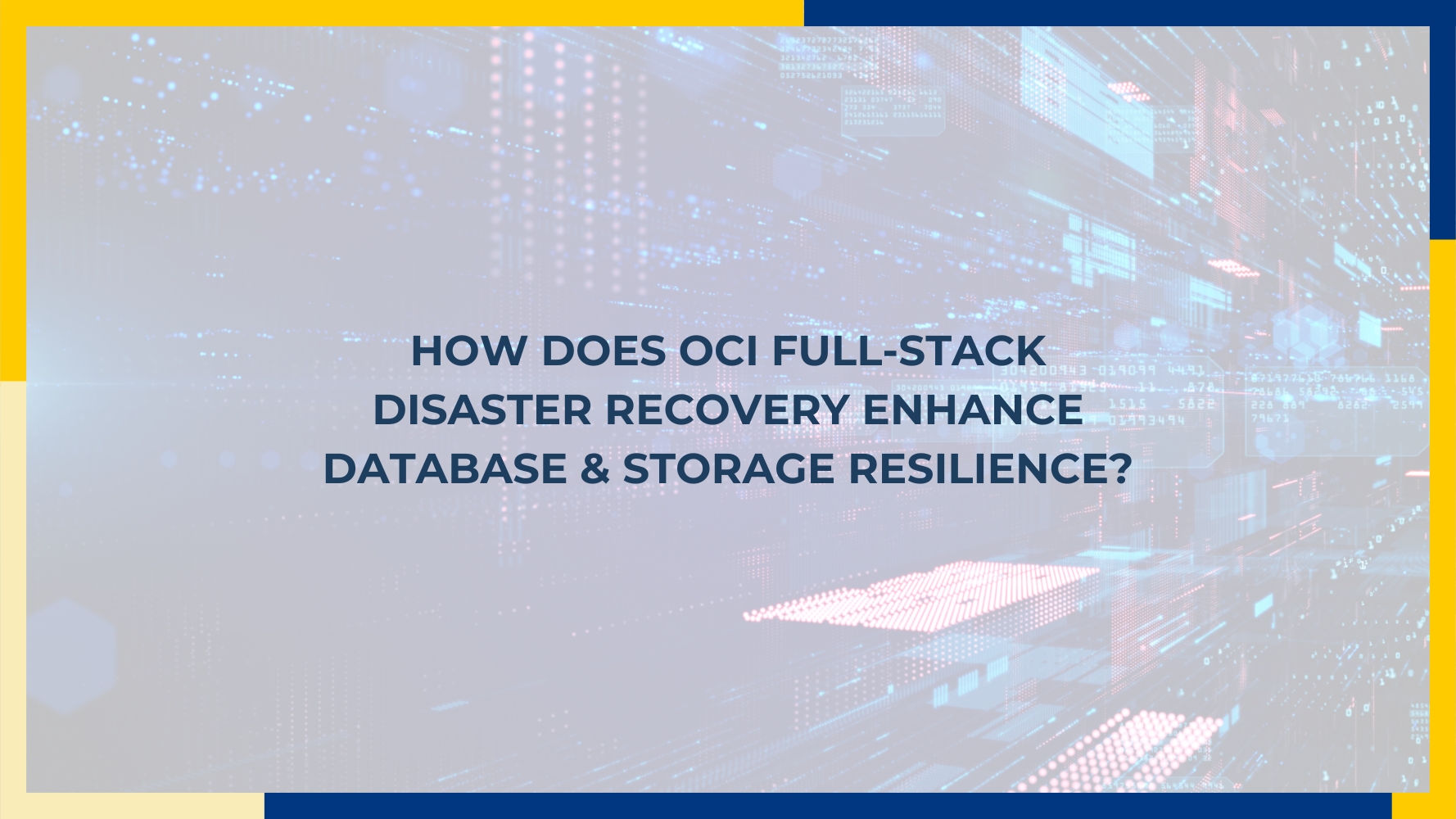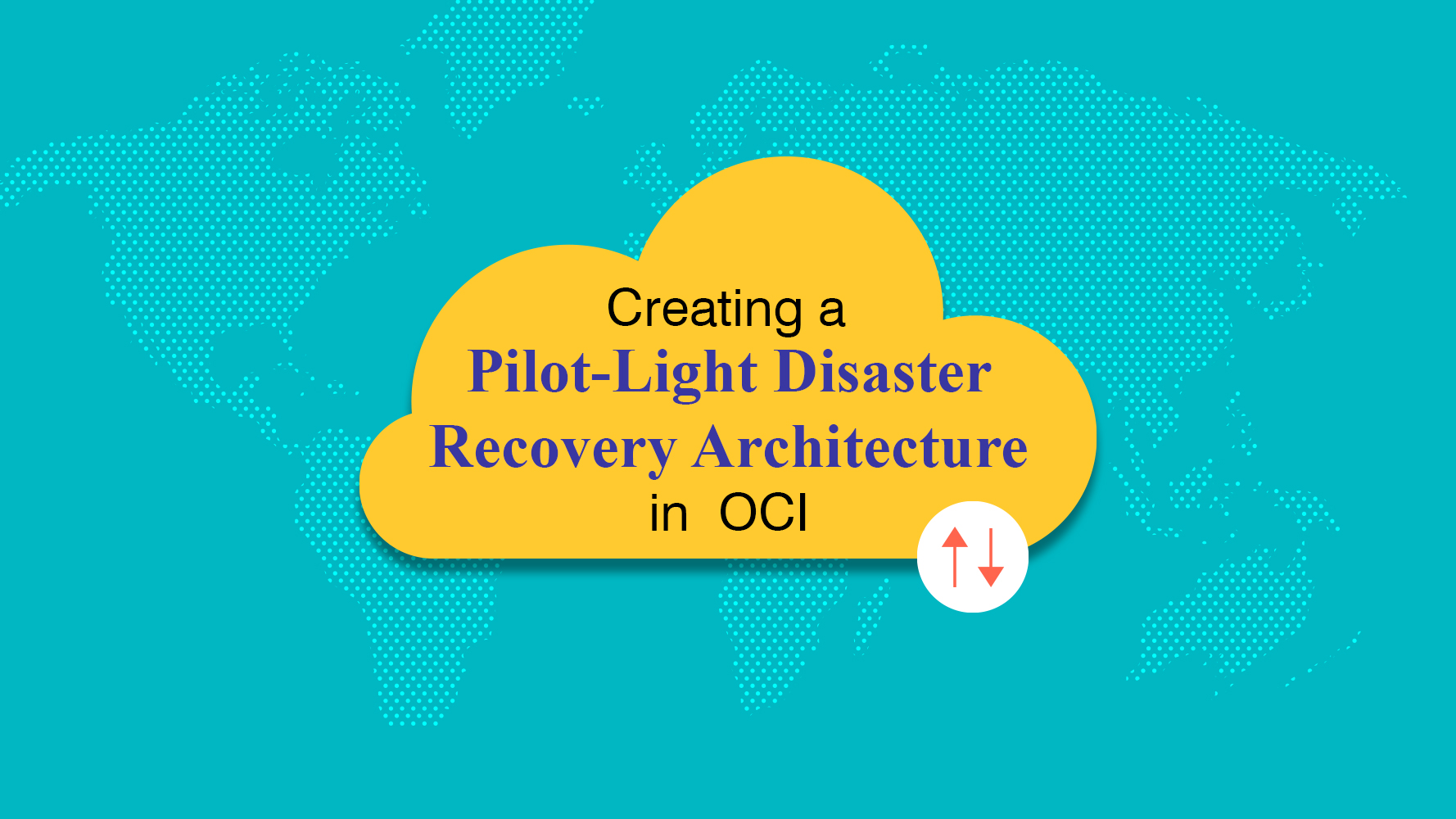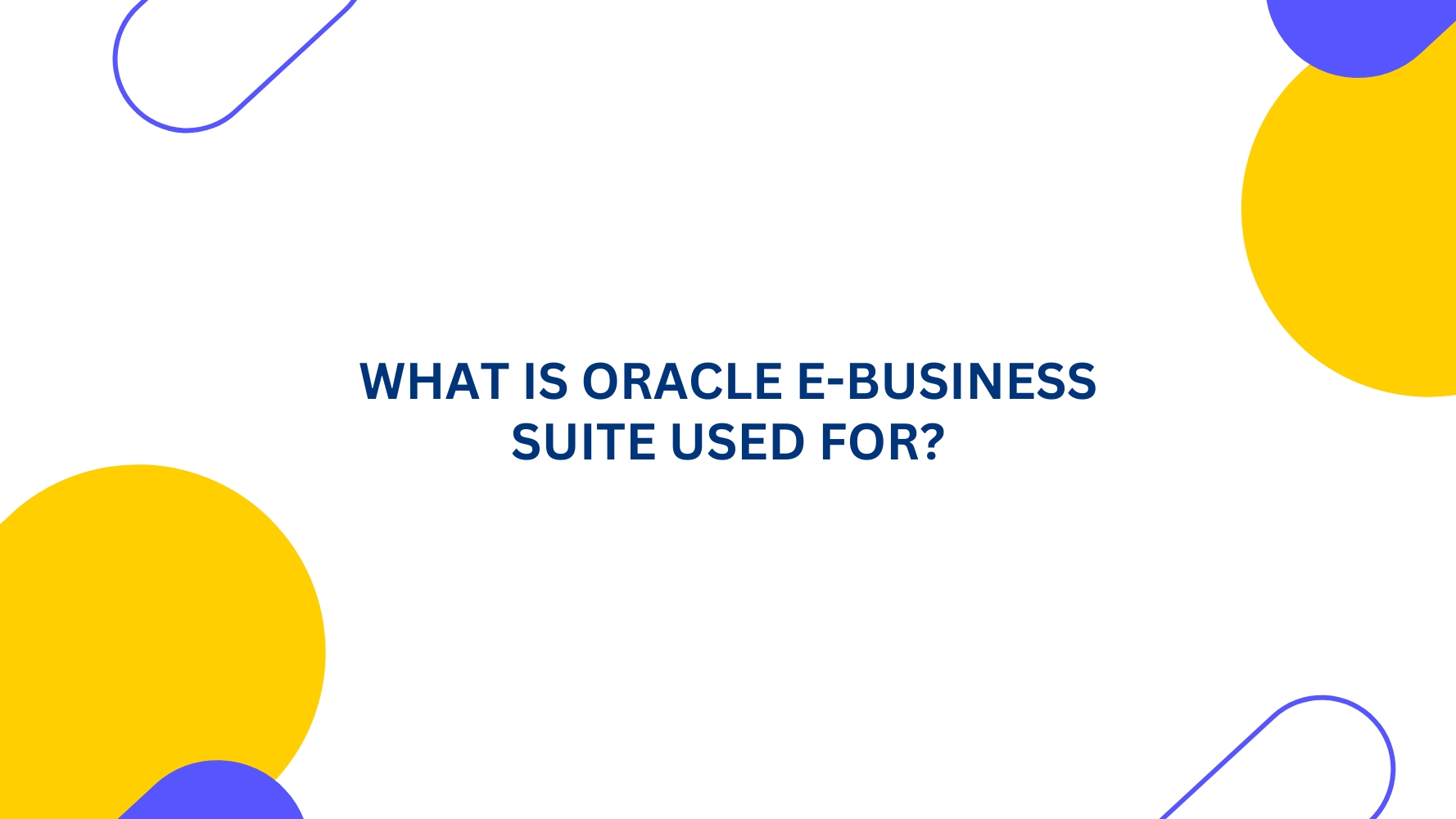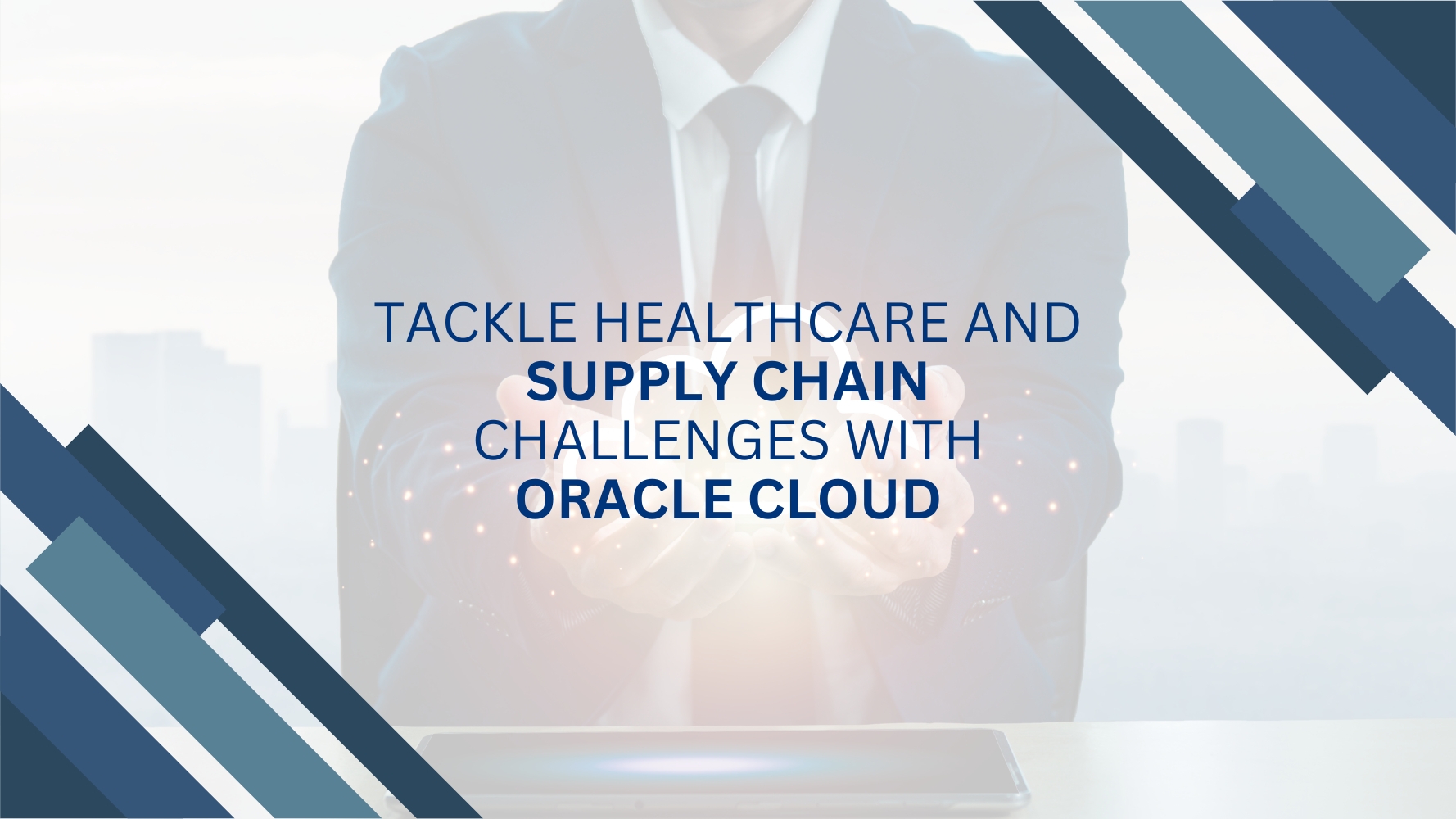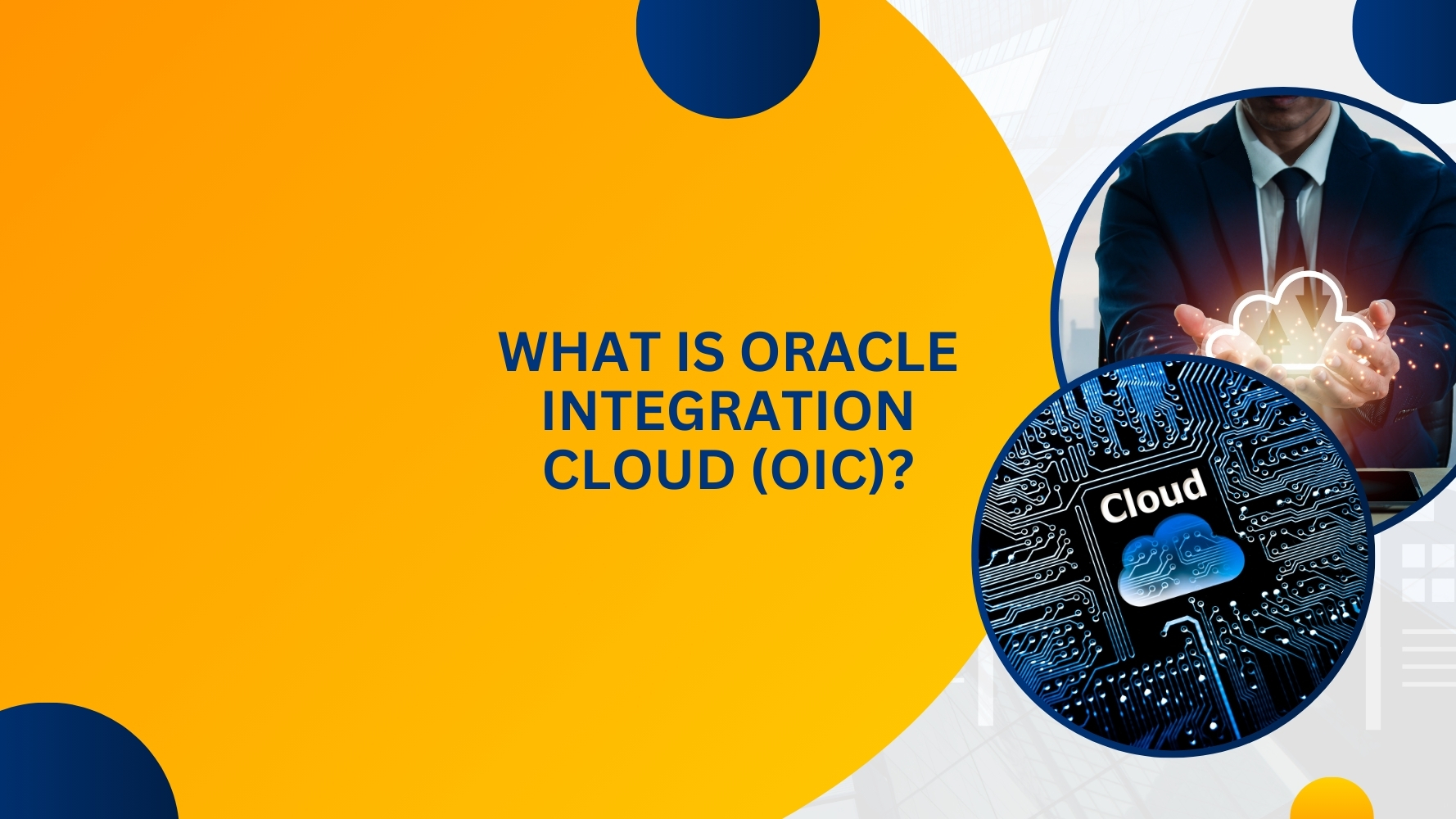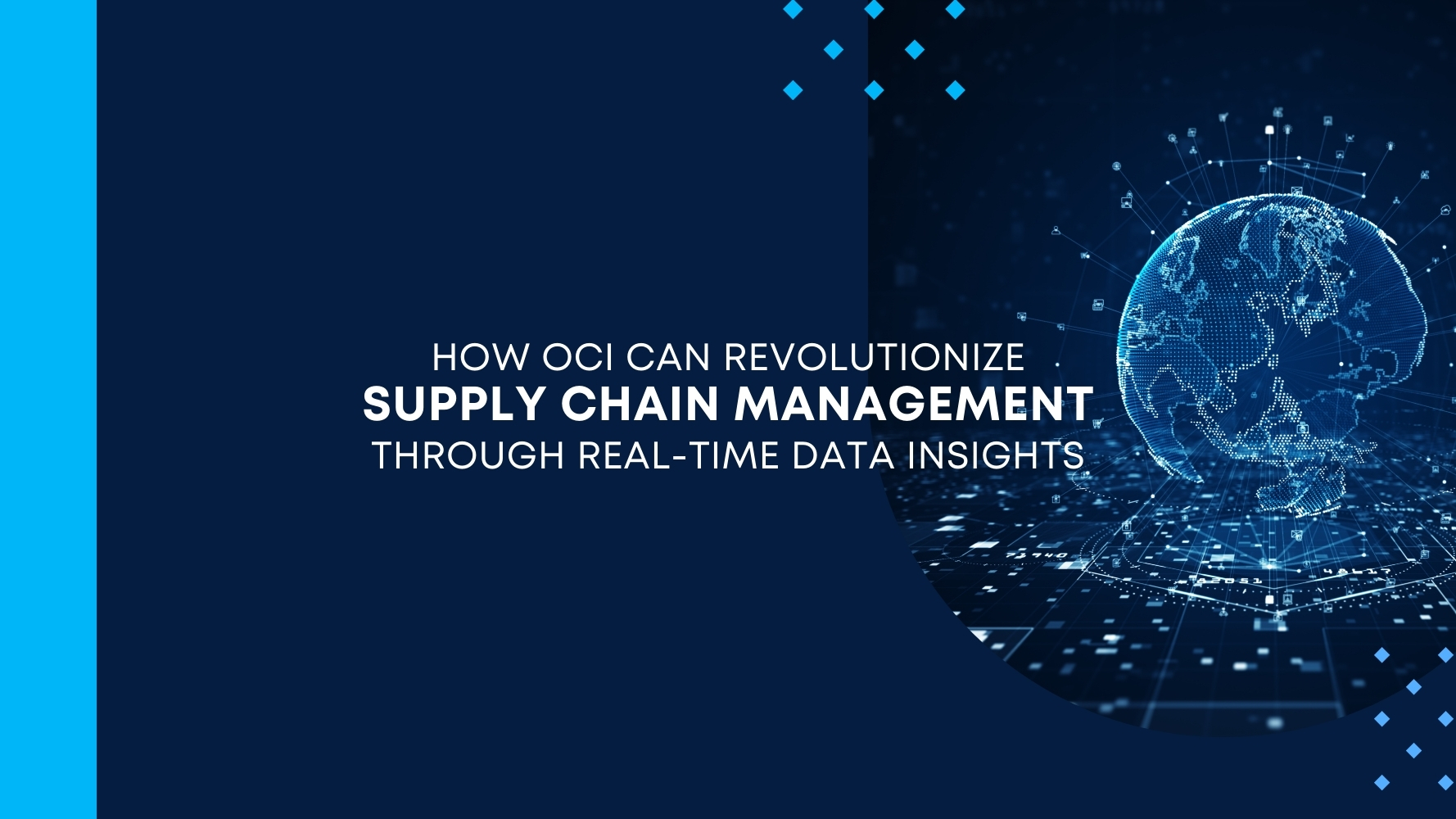In today’s digital age, businesses increasingly rely on their databases and storage systems for critical operations. A single point of failure can lead to significant disruptions and financial losses. Disaster recovery (DR) planning is essential to ensure business continuity and minimize downtime in the event of a catastrophic event. Oracle Cloud Infrastructure (OCI) offers a comprehensive and robust full-stack disaster recovery solution that enhances the resilience of databases and storage systems.
Understanding OCI full-stack Disaster Recovery
OCI full-stack disaster recovery provides a comprehensive solution for protecting critical applications, databases, and storage systems. It involves replicating data and workloads to a secondary OCI region, ensuring that businesses can quickly recover and resume operations during a disaster.
Key Components of OCI Full-stack Disaster Recovery
- OCI Availability Domains: OCI regions are divided into availability domains, which are isolated physical locations with independent power, cooling, and networking. This architecture enhances fault tolerance and resilience.
- OCI Block Volumes: OCI block volumes are high-performance storage volumes that can be attached to instances and used for databases, applications, and other workloads. They support asynchronous replication to a secondary availability domain within the same region or to a different region for disaster recovery.
- OCI Object Storage: OCI object storage is a scalable and durable storage service for storing and managing large amounts of unstructured data. It is ideal for storing backups, archives, and other data types that require long-term retention.
- OCI Database: OCI database offers a comprehensive suite of database services, including Oracle Database, MySQL, PostgreSQL, and NoSQL. These services support asynchronous replication to a secondary availability domain or region for disaster recovery.
- OCI Compute: OCI compute provides a variety of virtual machines (VMs) and bare metal instances for running applications and databases. These instances can be replicated to a secondary availability domain or region for disaster recovery.
- OCI Networking: OCI networking provides a robust and scalable network infrastructure that connects instances, storage volumes, and other resources. It supports network replication and failover to ensure high availability and disaster recovery.
Benefits of OCI Full-stack Disaster Recovery
- Enhanced Resilience: OCI full-stack disaster recovery provides a high level of resilience by replicating data and workloads to a secondary region. This helps protect against various disasters, including natural disasters, hardware failures, and cyberattacks.
- Reduced Downtime: In the event of a disaster, businesses can quickly recover and resume operations by failing over to the secondary region. This helps minimize downtime and reduce financial losses.
- Cost-Effective: OCI full-stack disaster recovery is more cost-effective than traditional on-premises disaster recovery methods. It eliminates the need to maintain a separate disaster recovery site and reduces the costs associated with hardware, software, and personnel.
- Scalability: OCI full-stack disaster recovery is highly scalable, allowing businesses to adjust their disaster recovery capacity to meet changing needs easily.
- Security: OCI provides a secure and compliant environment for storing and processing data. This helps protect against unauthorized access and data breaches.
If you need more information about Oracle Cloud Applications, connect with Tangenz.
Best Practices for Implementing OCI Full-stack Disaster Recovery
- Develop a Comprehensive DR Plan: Create a detailed DR plan that outlines the steps involved in recovering from a disaster. This plan should include procedures for testing and validating the DR environment.
- Regularly Test the DR Environment: Conduct regular tests to ensure that the DR environment is functioning correctly and that the recovery process is effective.
- Keep DR Data Up to Date: Ensure that DR data is up-to-date and consistent with production data. This helps minimize recovery time and ensure business continuity.
- Monitor DR Performance: Continuously monitor the performance of the DR environment to identify and address any issues.
- Stay Updated with OCI Updates: Stay informed about the latest OCI updates and best practices to ensure your DR solution is optimized for performance and security.
Let’s examine a real-world case study better to understand the value of OCI full-stack disaster recovery.
Case Study: How did OCI’s full-stack disaster recovery Help a global retail company?
A global retail company faced increasing challenges in managing its growing data volumes and ensuring business continuity. To address these challenges, the company decided to migrate its critical applications and databases to OCI and implement a full-stack disaster recovery solution.
By leveraging OCI’s robust infrastructure and replication capabilities, the company was able to replicate its production data to a secondary region. This provided high-level protection against natural disasters, hardware failures, and cyberattacks.
In a disaster, the company could quickly fail over to the secondary region and resume operations with minimal downtime with Oracle Fusion Cloud. This helped protect the company’s reputation and minimize financial losses.
Conclusion
OCI full-stack disaster recovery is a powerful solution for enhancing the resilience of databases and storage systems. By replicating data and workloads to a secondary region, businesses can protect against a wide range of disasters and minimize downtime. OCI’s comprehensive suite of services, scalability, and security make it an ideal choice for organizations of all sizes. By following best practices and regularly testing the DR environment, businesses can ensure they are well-prepared to recover from any disaster.
Ready to enhance your business resilience with OCI full-stack disaster recovery?
Connect with Tangenz, your trusted Oracle implementations partner, to learn more about how our expert team can help you implement OCI and protect your critical data. Schedule your free consultation today!
